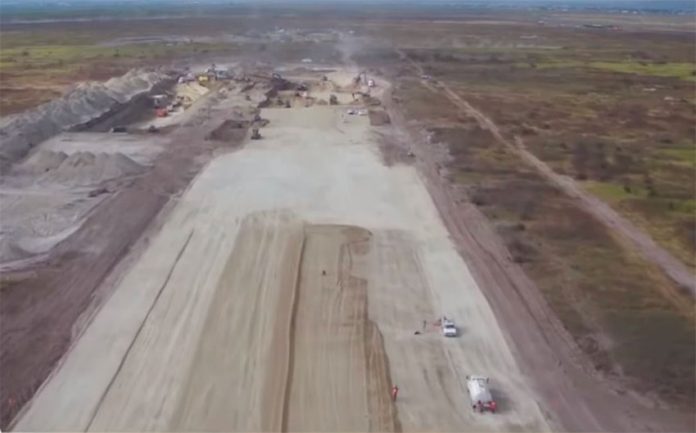Paleontological and archaeological discoveries at the site of the new Mexico City airport will not be made public on the grounds that releasing information about such finds would compromise national security.
In response to a freedom of information request, the National Institute of Anthropology and History (INAH) told the newspaper El Universal that it signed an agreement with the Secretariat of National Defense (Sedena) in August. It requires both parties to reserve information about the discovery of fossils and archaeological relics at the site of the Santa Lucía airport, currently under construction by Sedena at an air force base north of the capital in México state.
The agreement contradicts a pledge made by President López Obrador who said in October that all information related to the construction of the Santa Lucía airport will be made public.
Clause 16 of the agreement states that INAH and Sedena are bound to reserve details about paleontological and archaeological discoveries in accordance with Articles 110 and 113 of the Federal Law of Transparency and Access to Public Information.
The former article says that reserved information can be classified as that whose publication compromises national security, public security or national defense. Article 113 says that confidential information can only be accessed by the heads of the departments that generated it, their representatives and authorized public servants.
Clause 16 of the INAH / Sedena agreement also states that the two parties “will assume the responsibilities” determined by the relevant authorities if they fail to comply with their commitment to keep information about paleontological and archaeological discoveries secret.
The agreement stipulates that Sedena is responsible for responding to freedom of information requests about such finds after consultation with INAH.
Despite the two departments commitment to keep information secret, El Universal said that INAH was able to reveal that relics of the Teotihuacán culture have been found at the Santa Lucía site.
The pre-Hispanic city of Teotihuacán, now a popular tourist attraction featuring two enormous pyramids, is located approximately 15 kilometers southeast of the airport’s location.
INAH said that pre-Hispanic pots and other ceramic remains dated to the period between 200 and 650 AD as well as fragments of stone artifacts were found in the area where the airport’s central runway will be located. The finds are currently being analyzed by INAH experts.
Excavations carried out at Santa Lucía since 1956 have also unearthed fossils of Pleistocene-era fauna, including mammoths, saber-toothed cats and camelids.
Source: El Universal (sp)
